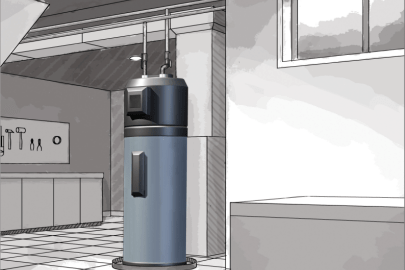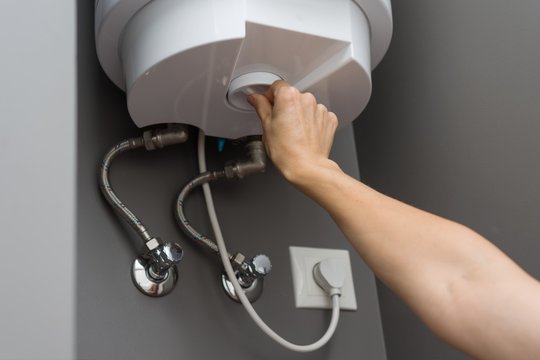How to Keep Your Home's Hot Water System in Good ConditionKey Guidance on Caring for Your Home's Hot Water System
How to Keep Your Home's Hot Water System in Good ConditionKey Guidance on Caring for Your Home's Hot Water System
Blog Article
Just about everyone may have their own unique way of thinking with regards to How to Maintain a Hot Water Heater in a Few Simple Steps.

Hot water is important for day-to-day convenience, whether it's for a revitalizing shower or cleaning meals. To guarantee your hot water system runs successfully and lasts much longer, normal upkeep is vital. This write-up supplies functional ideas and understandings on exactly how to preserve your home's hot water system to avoid disruptions and costly repairs.
Intro
Keeping your home's warm water system may seem challenging, but with a few simple actions, you can guarantee it operates smoothly for years ahead. This guide covers every little thing from recognizing your warm water system to do it yourself upkeep tips and recognizing when to hire professional assistance.
Value of Preserving Your Hot Water System
Routine upkeep not just expands the lifespan of your hot water system but additionally guarantees it runs efficiently. Ignoring upkeep can lead to reduced performance, higher energy costs, and also premature failure of the system.
Signs Your Hot Water System Needs Upkeep
Understanding when your warm water system requires attention can protect against major problems. Keep an eye out for indicators such as irregular water temperature level, weird sounds from the heating system, or rustic water.
Flushing the Water Heater
Flushing your water heater removes sediment buildup, improving performance and prolonging its life.
Checking and Replacing Anode Rods
Anode rods prevent corrosion inside the container. Checking and replacing them when worn out is essential.
Facility Concerns Needing Expert Assistance
Examples consist of significant leaks, electrical problems, or if your hot water heater is constantly underperforming.
Routine Professional Upkeep Advantages
Professional upkeep can consist of extensive inspections, tune-ups, and making sure compliance with safety criteria.
Checking and Changing Temperature Setups
Changing the temperature setups makes sure optimal efficiency and security.
DIY Tips for Upkeep
You can do several upkeep jobs yourself to maintain your hot water system in leading problem.
Looking for Leaks
Consistently examine pipelines and connections for leakages, as these can lead to water damage and greater bills.
Comprehending Your Warm Water System
Before diving right into upkeep tasks, it's practical to understand the fundamental parts of your hot water system. Generally, this consists of the water heater itself, pipelines, anode rods, and temperature level controls.
Regular Monthly Upkeep Tasks
Routine month-to-month checks can assist capture minor concerns before they rise.
Evaluating Stress Alleviation Valves
Testing the pressure safety valve ensures it works correctly and stops excessive pressure build-up.
Insulating Pipelines
Insulating hot water pipelines decreases warmth loss and can save energy.
When to Call a Specialist
While do it yourself maintenance is helpful, some concerns require specialist proficiency.
Conclusion
Normal upkeep of your home's hot water system is necessary for efficiency, durability, and price savings. By following these tips and understanding when to seek expert aid, you can make certain a reliable supply of hot water without unforeseen interruptions.
How to Maintain an Instant Hot Water Heater
Before tinkering with your hot water heater, make sure that it’s not powered on. You also have to turn off the main circuit breaker and shut off the main gas line to prevent accidents. Also turn off the water valves connected to your unit to prevent water from flowing into and out of the appliance. 2. When you’re done, you have to detach the purge valves’ caps. These look like the letter “T” and are situated on either side of the water valves. Doing so will release any pressure that has accumulated inside the valves while at the same time avoid hot water from shooting out and burning your skin. 3. When the purge valves’ caps are removed, you have to connect your hosing lines to the valves. Your unit should have come with three hoses but if it didn’t, you can purchase these things from any hardware or home repair shops. You can also get them from retail stores that sell water heating systems. Read the user’s manual and follow it to complete this task properly. When the hosing lines are connected, open the purge port’s valves. 4. You should never use harsh chemical cleaners or solutions when cleaning your unit. Make use of white vinegar instead. It should be undiluted and you’ll probably use about 2 gallons. 5. Now flush your water heater. This task should probably take about 40 minutes. We can’t give you specific directions for this because the procedure is carried out depending on the type, model and brand of your heater. With that being said, refer to the user’s manual. 6. When you’re done draining the unit, you have to turn off the purge port valves again. Remove the hosing lines that you earlier installed on each of the water valves. Put the valve caps (purge port) back in their respective places and be very careful so as not to damage the rubber discs that are found inside these caps. 7. Now that everything’s back in place, check your user’s manual again to find out how to reactivate your water heating system. 8. Once it is working, turn one of your hot water faucets on just to let air pass through the heater’s water supply pipes. Leave the tap on until water flows smoothly out of it. https://www.orrplumbing.com/blog/2014/september/how-to-maintain-an-instant-hot-water-heater/

We had been shown that editorial on How to Maintain Your Water Heater & Prolong its Life from a friend on our other site. Loved our blog entry? Please quickly share it. Help somebody else discover it. I love your readership.
Click Here Report this page